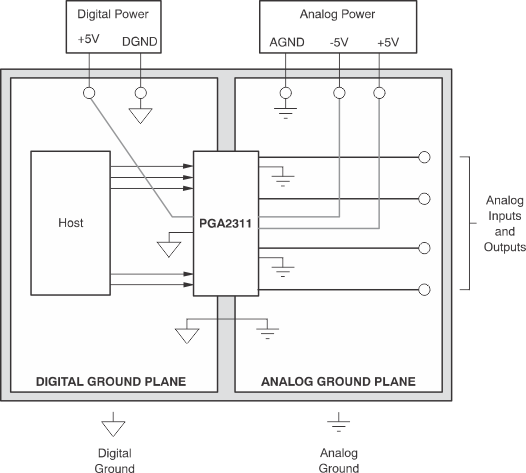SBOS218D December 2001 – May 2016 PGA2311
PRODUCTION DATA.
- 1 Features
- 2 Applications
- 3 Description
- 4 Revision History
- 5 Pin Configuration and Functions
- 6 Specifications
- 7 Detailed Description
- 8 Application and Implementation
- 9 Power Supply Recommendations
- 10Layout
- 11Device and Documentation Support
- 12Mechanical, Packaging, and Orderable Information
封装选项
机械数据 (封装 | 引脚)
散热焊盘机械数据 (封装 | 引脚)
- DW|16
订购信息
10 Layout
10.1 Layout Guidelines
The ground planes for the digital and analog sections of the PCB must be separate from one another. The planes must be connected at a single point. Figure 15 shows the recommended PCB floor plan for the PGA2311.
The PGA2311 is mounted so that the device straddles the split between the digital and analog ground planes. Pins 1 through 8 are oriented to the digital side of the board and pins 9 through 16 are on the analog side of the board.
10.2 Layout Example
 Figure 15. Typical PCB Layout Floor Plan
Figure 15. Typical PCB Layout Floor Plan